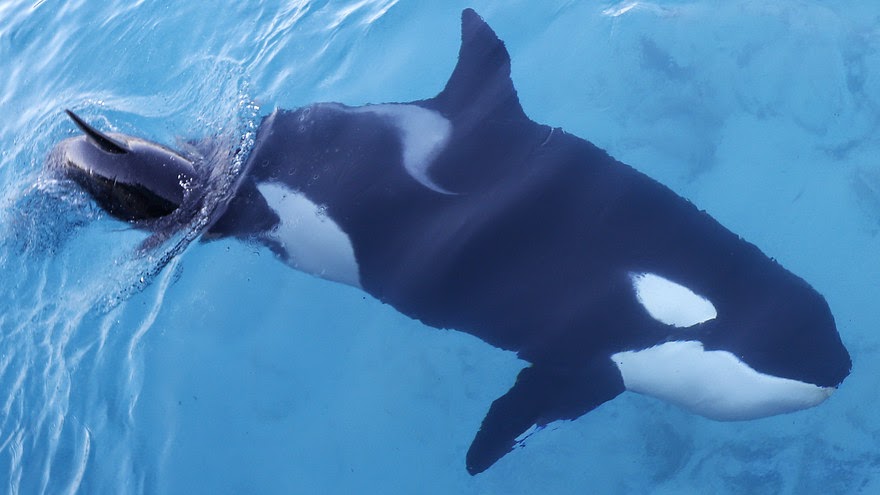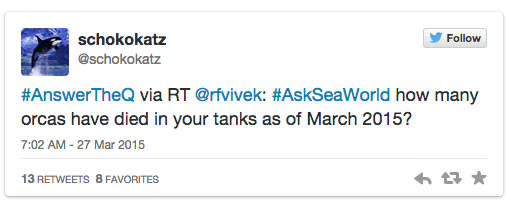Fight Circus Cruelty
By Tiffany Jin
Have you ever watched a movie called Madagascar 3?
In the movie, Alex the lion and his friends are trying to find their way home to the New York Zoo by joining in a circus. With excellent performing, they finally find their way home and live a happy life in the zoo. It seems like circus animals are happy and willing to perform in the movie. However, in reality, circus animals live in terrible conditions and suffer from both mental and physical injuries.
(tigers forced to jump through fire circles)
Elephants, tigers, and other circus animals are wild animals. Whether they were captured in their native lands or bred in captivity, whether or not they appear docile or at ease around humans, they remain wild at heart. Wild animals used in circuses originate from different parts of the globe and have unique and specific needs for diet, health, vet care, social interaction, stimulation, exercise, movement, living environment, climate, etc. Yet circus animals are all trained similarly, and all live and travel together under the same conditions. It is impossible for the unique needs of every animal to be met. Worse yet, outright neglect and mistreatment of animals in the circus is rampant throughout the industry.

"Performing" animals spend most of their days in boxcars, cages, or chains, and live very differently than they would in the wild. Wild elephants, for example, live in large, social herds and walk up to 25 miles every day. Tigers, lions, and other animals found in circuses are also always on the move in their native habitats. In contrast, circus wild animals are confined to travel trucks or trains about 300 days of each year. Depriving these creatures their freedom to roam and to engage in other instinctual behaviors is inherently cruel.

Over long distance and days at a time, forced to stand in their own waste, animals may be caged or chained, often in vehicles that lack temperature control. You could pass a semi-truck on the highway and never suspect its cargo is elephants and tigers. Many circus travel vehicles are small, dark, filthy, and often in a dangerous state of disrepair. Circuses are repeatedly cited by the U.S. Department of Agriculture (USDA) under the Animal Welfare Act for trailers that have splintering wood and sharp, protruding metal pieces near animals' cages. Animals are born, injured, and die while on the road.

The circus industry would have us believe that the animals in the ring have been exposed their entire lives exclusively to positive-reinforcement training methods. While the show is in progress, the audience may indeed see animals receiving food rewards, praise, and positive feedback. Observant audience members will also notice bullhooks and other devices of domination. The USDA has documented trainers striking elephants and large cats during performances. What the circus industry doesn't want anyone to see is what happens behind the scenes, where the object is to initially "break" the animals and train them throughout their lives so they will perform unnatural tricks.

Common sense tells us that a 7,000-pound elephant or a tiger with 3-inch-long razor-sharp teeth would naturally dominate a human being, and that he could not be forced into doing something he does not want to do. But the circus maxim is "the show must go on," and so it does, whether or not the animals are willing or even able to participate. The tricks that animals must perform are unnatural, frightening, even painful; but they must perform. Only a training method tougher than the animals could command such obedience from them.
The bull hook (also called a "hook" or "ankus") is perhaps the most notorious tool in the animal trainer's arsenal. Used on elephants, the bullhook is a long, thick pole with a sharp metal hook on one end. Though elephant skin is thick, it is also very sensitive. During training with this device, it is not uncommon for an elephant to scream and drop to his/her knees to try to avoid the blows.
In addition to the ankus for stabbing or beating, other training tools and methods used to initially "break" and train animals throughout their lives include lengthy chaining, food and water deprivation, use of whips, clubs and blunt objects, and electric prods.
Bears, elephants, tigers, and other animals do not voluntarily ride bicycles, stand on their heads, balance on balls, or jump through rings of fire. They don’t perform these and other difficult tricks because they want to; they perform them because they’re afraid of what will happen if they don’t. What we can do is simply say NO to animals in circuses.
PETA(PEOPLE FOR THE ETHICAL TREATMENT OF ANIMALS) is an organization that has fighting for end animal use in circuses for years. To support them, click
Sign for End circus cruelty today!
Be sure that all of the donations collected here will be going toward saving animals at OC Animal Shelter!






































